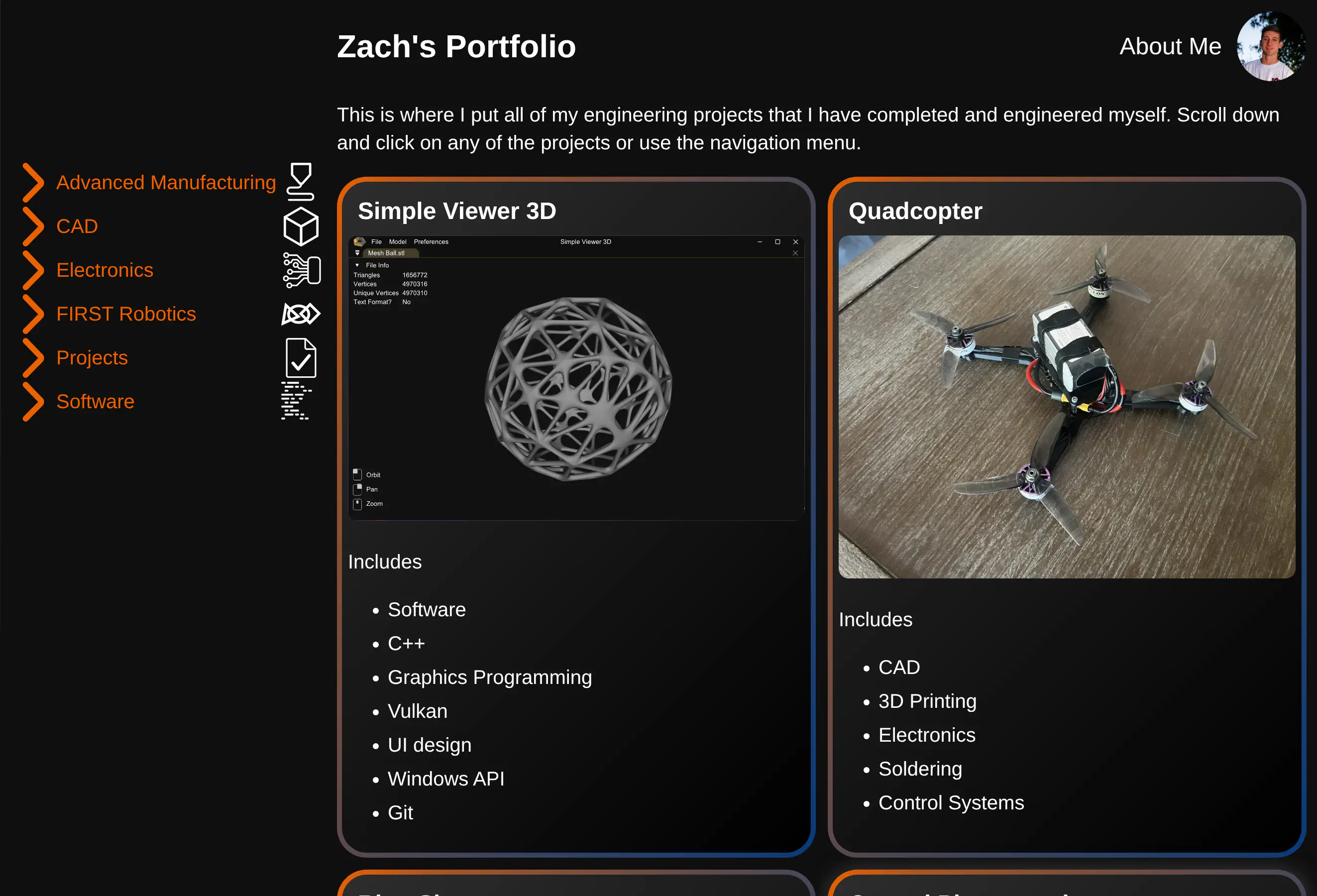
How it was built
Websites are built using tools like HTML, CSS, and JavaScript.
However, a common problem with these tools is building things like navigation bars. Where, if updated, needs to be updated along with every other page… Not very efficient
Hugo handles these inefficiencies presented with plain HTML.
Why Hugo
Some of the benefits of using Hugo are that I can create pages using markdown. Which is much less verbose than HTML.
+++
date = '2025-07-10T16:26:58-07:00'
title = 'Simple Viewer 3D'
tags = [ 'Software', 'C++', 'Graphics Programming', 'Vulkan', 'UI design', 'Windows API', 'Git']
menupath = 'Software/C++'
weight = 10
+++
This would be paragraph text.
- This would be a list itemThis markdown file configures multiple things
- The Title of the page
- Tags: the skills used as would appear on the home page card
- The path in which it resides in the navigation menu
- Weight: which determines its priority on the home page
Hugo also allows JPG and PNG images to be automatically converted into more efficient formats like WebP.
Design and device flexibility
When viewing on large screen devices(desktops and laptops), the content is centered in the middle of the page for a natural experience, and the content is set to a limited width so you don’t have to track what line you’re on when reading.
On small screen/mobile devices, the center content takes up the entire width of the page, and the navigation menu is moved to the bottom for a better viewing experience.
